Why is my Panasonic CS-S9TKV outdoor unit emitting water or steam?
- BbpearsonAug 17, 2025
The water or steam emitted from the outdoor unit of your Panasonic Air Conditioner is due to condensation or evaporation occurring on the pipes.
Why is my Panasonic CS-S9TKV outdoor unit emitting water or steam?
The water or steam emitted from the outdoor unit of your Panasonic Air Conditioner is due to condensation or evaporation occurring on the pipes.
Why is the timer light always on on my Panasonic CS-S9TKV Air Conditioner?
The TIMER indicator is always on because the timer setting repeats daily once it has been set on your Panasonic Air Conditioner.
Why is the electric current higher than specified in my Panasonic CS-S9TKV Air Conditioner?
A higher than specified electric current during operation of your Panasonic Air Conditioner could be due to a dusty condenser preventing heat radiation. Measuring electric current during operation preventing heat radiation can help diagnose this issue.
Why is my Panasonic CS-S9TKV making cracking sounds?
The cracking sound you hear during the operation of your Panasonic Air Conditioner is due to temperature changes causing the expansion and contraction of the unit.
Why is mist coming from my Panasonic CS-S9TKV Air Conditioner?
The mist emerging from the indoor unit of your Panasonic Air Conditioner is a condensation effect caused by the cooling process.
Why is my Panasonic Air Conditioner making loud noises during i AUTO-X?
The louder noise from the outdoor unit of your Panasonic Air Conditioner during the initial operation of i AUTO-X is because the compressor and fan rotate at a higher speed to boost cooling performance.
Why is there a delay when restarting my Panasonic Air Conditioner?
The delay in operation after restarting your Panasonic Air Conditioner is a protection mechanism for the unit’s compressor.
What is the water flowing sound in my Panasonic CS-S9TKV?
The water flowing sound you hear during the operation of your Panasonic Air Conditioner is caused by the refrigerant flow inside the unit.
Why are the plastic parts of my Panasonic CS-S9TKV discolored?
Discoloration of some plastic parts in your Panasonic Air Conditioner is subject to the material types used and is accelerated when exposed to heat, sunlight, UV light, or environmental factors.
Why does the fan stop sometimes on my Panasonic Air Conditioner?
The indoor fan of your Panasonic Air Conditioner stops occasionally during automatic fan speed setting to help remove surrounding odors.
Explains the AUTO-X cooling technology for fast cooling and comfort.
Details ECONAVI's energy saving technology adjusting cooling power based on room conditions.
Describes nanoe-G's function to purify air by deactivating micro-organisms.
Step-by-step instructions for inserting batteries into the remote control.
Procedure to set the clock on the air conditioner's remote control.
Guide to selecting mode, starting/stopping, and setting temperature.
Lists included accessories such as remote control and batteries.
Important notes and precautions for operating the air conditioner.
Explains warning and caution symbols and their meanings.
Safety guidelines for the indoor and outdoor units of the air conditioner.
Safety guidelines for remote control use and power supply connections.
Covers electrical safety, cord care, and specific usage restrictions for safe operation.
Details safety for maintenance, water leakage, and installation rack integrity.
Guides on using i AUTO-X for quick temperature adjustment and its cancellation.
Explains how to choose between i AUTO-X, COOL, and DRY modes.
Instructions for maximizing comfort during sleep with automatic temperature adjustment.
Details how to reduce airflow noise for quiet operation.
Explains how to select fan speed and limitations in i AUTO-X mode.
Describes the function of the manual ON/OFF button on the unit.
Guides on optimizing energy saving using the ECONAVI feature.
Details on activating nanoe-G for air purification and filter deactivation.
Explains how to adjust airflow direction using the AIR SWING function.
Describes how the unit restarts automatically after a power failure.
Highlights which operation modes can be activated together or cannot be selected concurrently.
Provides in-depth explanations of i AUTO-X, COOL, and DRY operating modes.
Explains the process of nanoe-G in-filter deactivation after unit shutdown.
Details how ECONAVI utilizes human activity and sunlight sensors for energy saving.
Explains how the human activity sensor scans for heat source and movement.
Details i AUTO-X's comfort cooling based on human presence and activity after initial fast cooling.
Specifies the recommended temperature ranges (DBT/WBT) for COOL mode.
Provides essential advice for cleaning the air conditioner unit safely and effectively.
Step-by-step guide for cleaning the indoor unit components.
Instructions on removing, cleaning, and attaching air filters.
Guidance for inspection after non-use and preparation for extended periods of inactivity.
Lists common symptoms that do not indicate a malfunction and their causes.
Steps to check before contacting service for operational issues or noise.
Identifies conditions requiring immediate shutdown and consultation with an authorized dealer.
Procedure to retrieve error codes using the remote control for diagnosing issues.
Information regarding disposal of old equipment and batteries within the European Union.
Guidance for discarding items in countries outside the European Union.
Explanation of battery symbols, including combinations with chemical symbols.
Explains the AUTO-X cooling technology for fast cooling and comfort.
Details ECONAVI's energy saving technology adjusting cooling power based on room conditions.
Describes nanoe-G's function to purify air by deactivating micro-organisms.
Step-by-step instructions for inserting batteries into the remote control.
Procedure to set the clock on the air conditioner's remote control.
Guide to selecting mode, starting/stopping, and setting temperature.
Lists included accessories such as remote control and batteries.
Important notes and precautions for operating the air conditioner.
Explains warning and caution symbols and their meanings.
Safety guidelines for the indoor and outdoor units of the air conditioner.
Safety guidelines for remote control use and power supply connections.
Covers electrical safety, cord care, and specific usage restrictions for safe operation.
Details safety for maintenance, water leakage, and installation rack integrity.
Guides on using i AUTO-X for quick temperature adjustment and its cancellation.
Explains how to choose between i AUTO-X, COOL, and DRY modes.
Instructions for maximizing comfort during sleep with automatic temperature adjustment.
Details how to reduce airflow noise for quiet operation.
Explains how to select fan speed and limitations in i AUTO-X mode.
Describes the function of the manual ON/OFF button on the unit.
Guides on optimizing energy saving using the ECONAVI feature.
Details on activating nanoe-G for air purification and filter deactivation.
Explains how to adjust airflow direction using the AIR SWING function.
Describes how the unit restarts automatically after a power failure.
Highlights which operation modes can be activated together or cannot be selected concurrently.
Provides in-depth explanations of i AUTO-X, COOL, and DRY operating modes.
Explains the process of nanoe-G in-filter deactivation after unit shutdown.
Details how ECONAVI utilizes human activity and sunlight sensors for energy saving.
Explains how the human activity sensor scans for heat source and movement.
Details i AUTO-X's comfort cooling based on human presence and activity after initial fast cooling.
Specifies the recommended temperature ranges (DBT/WBT) for COOL mode.
Provides essential advice for cleaning the air conditioner unit safely and effectively.
Step-by-step guide for cleaning the indoor unit components.
Instructions on removing, cleaning, and attaching air filters.
Guidance for inspection after non-use and preparation for extended periods of inactivity.
Lists common symptoms that do not indicate a malfunction and their causes.
Steps to check before contacting service for operational issues or noise.
Identifies conditions requiring immediate shutdown and consultation with an authorized dealer.
Procedure to retrieve error codes using the remote control for diagnosing issues.
Information regarding disposal of old equipment and batteries within the European Union.
Guidance for discarding items in countries outside the European Union.
Explanation of battery symbols, including combinations with chemical symbols.
| Inverter | Yes |
|---|---|
| Refrigerant | R32 |
| Compressor Type | Rotary |
| Type | Split System |
| Star Rating | 5 |
| Power Supply | 220-240 V, 50 Hz |
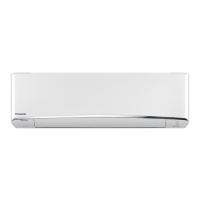
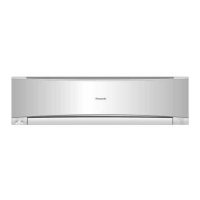
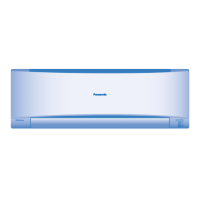

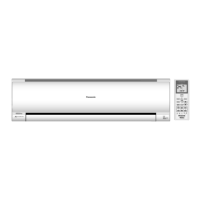
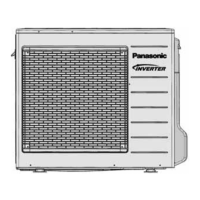
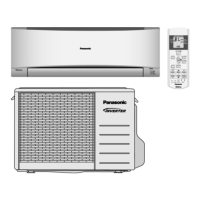
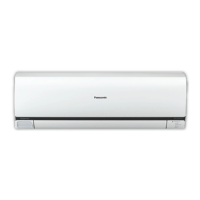
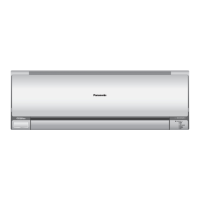
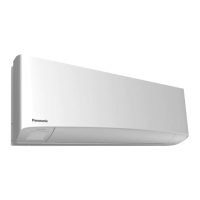
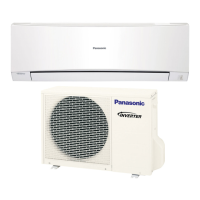
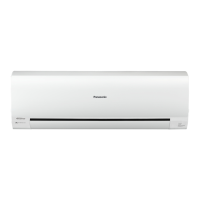
